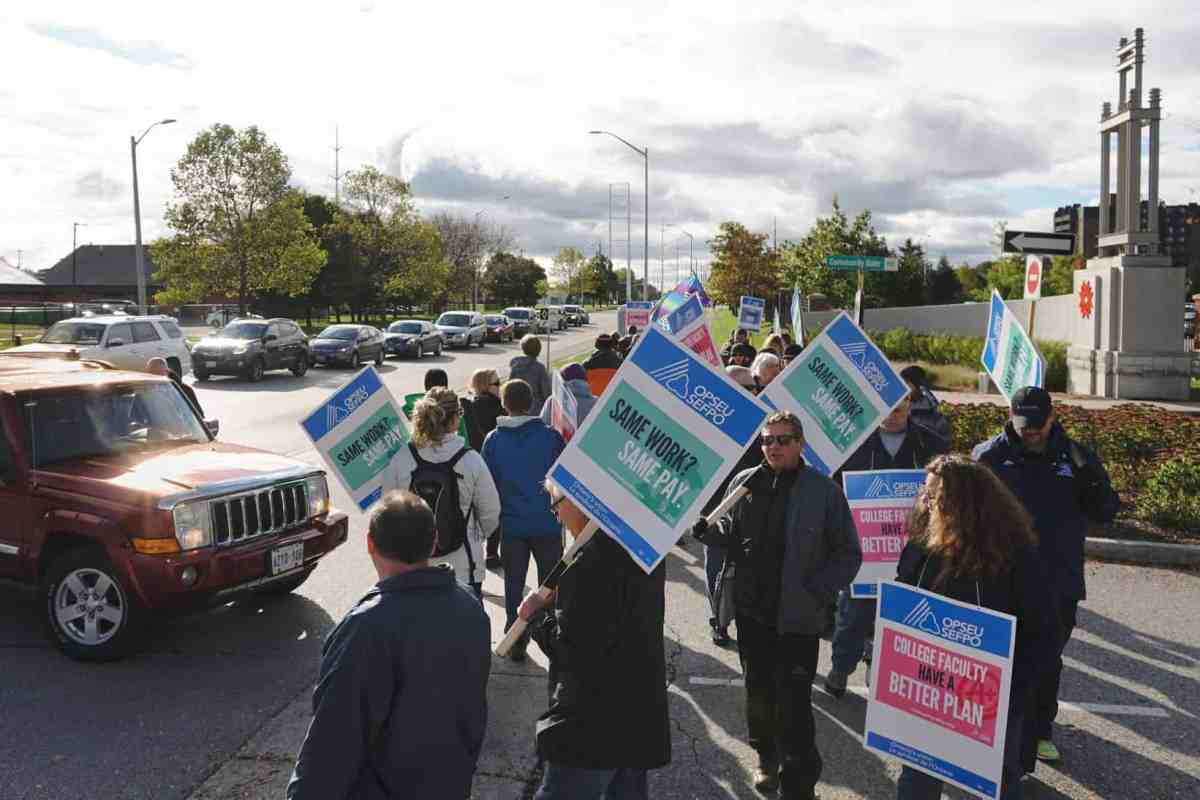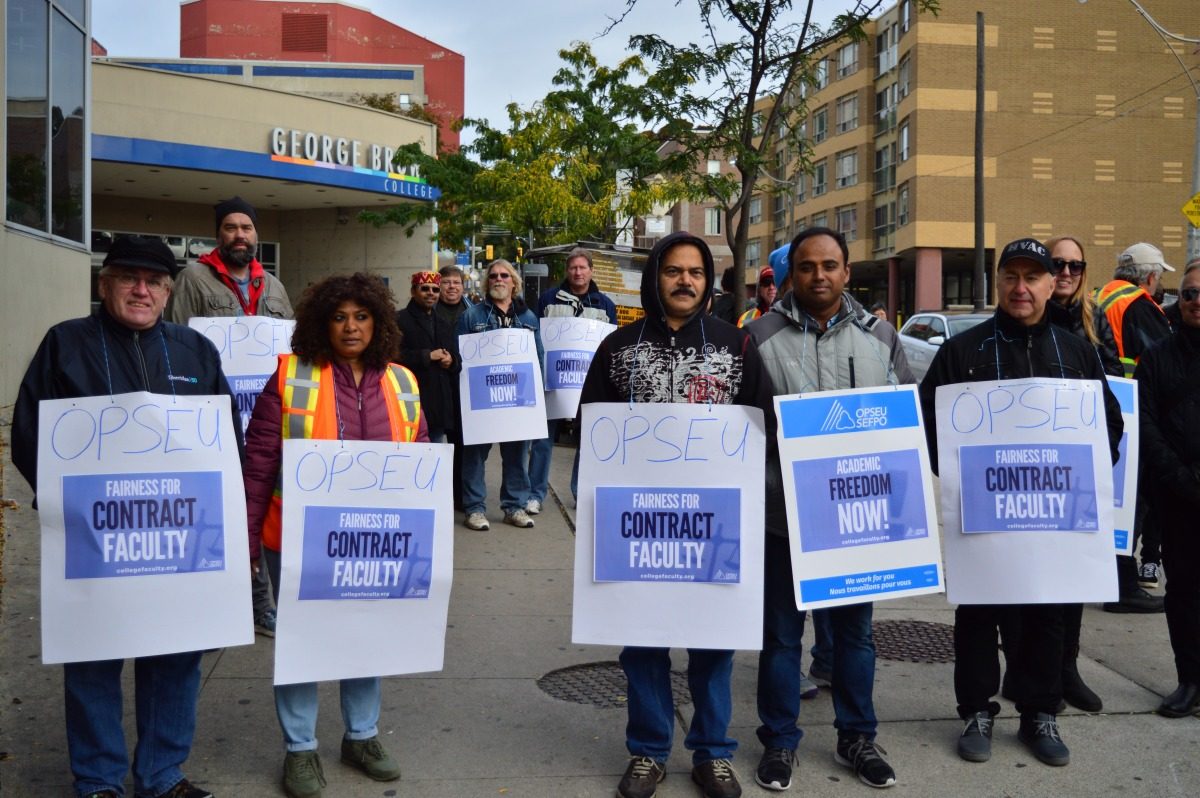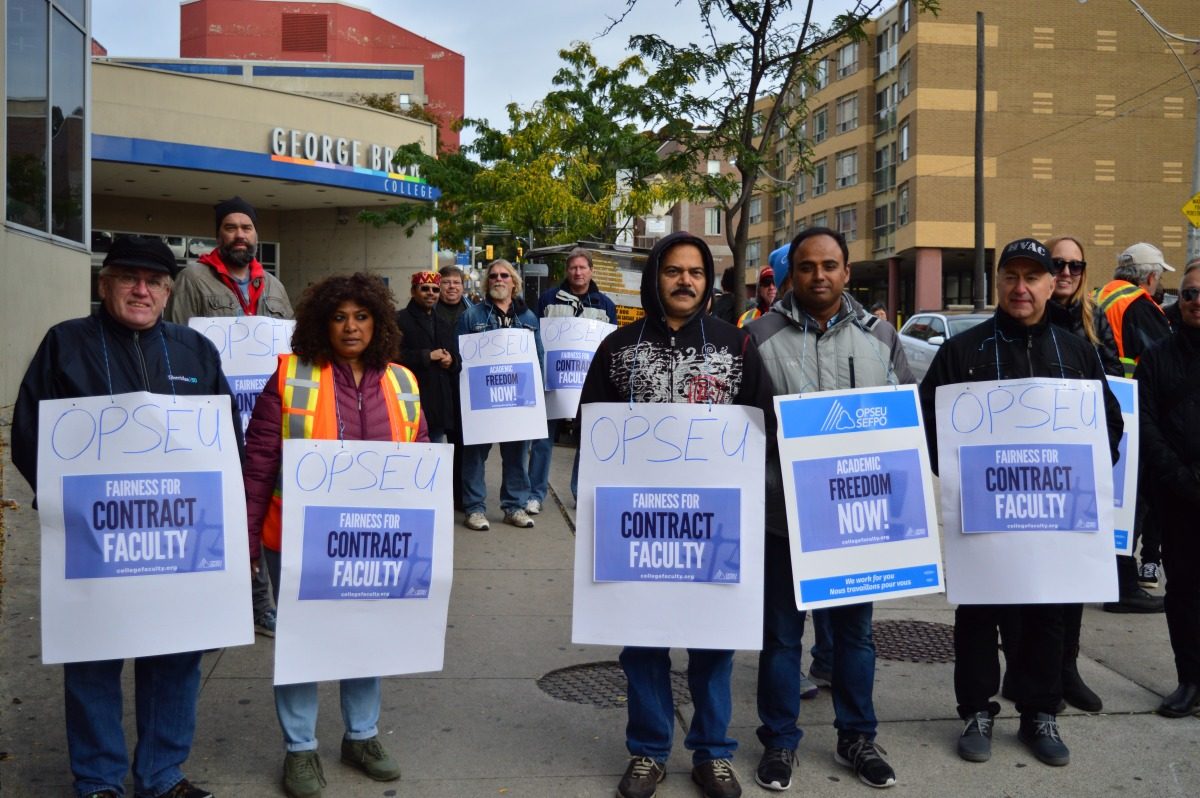Faculty strike averted at Ontario colleges as both sides agree to a deal! After weeks of tense negotiations and looming disruption to student learning, professors and college administrators have reached a compromise, averting a potentially devastating strike. This agreement marks a significant turning point, not only for the immediate future of Ontario’s college system but also for the broader landscape of labor relations within the post-secondary education sector.
The details of this hard-fought compromise are fascinating, revealing strategic maneuvering and critical concessions from both sides.
This article delves into the key provisions of the agreement, exploring the impacts on students, the financial implications for colleges and faculty, and the negotiation strategies employed. We’ll examine the long-term effects on labor relations and analyze the public’s perception of the outcome. Get ready for a closer look at the inside story of this significant development.
Ontario College Faculty Strike Averted: Agreement Details

The recent threat of a faculty strike at Ontario colleges was successfully averted following a negotiated agreement between the college faculty and the college administration. This agreement, reached after intense negotiations, addresses key concerns raised by faculty members while mitigating potential disruptions to student learning and the overall academic calendar.
So, the Ontario college faculty strike is officially off – both sides reached a deal! It’s a relief for students, right? Need a break from all that serious news? Check out this review of Tim Allen’s new show, Tim Allen’s ‘Shifting Gears’ is exclusively for Tim Allen lovers: Review , for a totally different kind of perspective.
Anyway, back to the good news: classes should be resuming soon at Ontario colleges thanks to the averted strike.
The Agreement’s Key Provisions
The agreement encompasses several key provisions addressing salary increases, workload adjustments, and improvements to job security. While specific financial details were not publicly released, the agreement reflects a compromise between the faculty’s initial demands and the colleges’ budgetary constraints. Significant concessions were made by both parties, showcasing a commitment to resolving the dispute amicably. The following table summarizes the key provisions:
| Provision | Faculty Impact | College Impact | Public Impact |
|---|---|---|---|
| Salary Increases | Improved compensation packages, potentially including retroactive pay. | Increased operational costs, potentially requiring reallocation of budgets. | Potentially no direct impact, though could indirectly affect tuition fees in the future. |
| Workload Reduction | Reduced teaching hours and administrative tasks, leading to improved work-life balance. | Potential need for additional faculty hiring or reallocation of existing resources. | Potentially improved teaching quality and student outcomes. |
| Job Security Measures | Enhanced protection against layoffs and contract terminations. | Increased financial commitment to maintaining staffing levels. | Improved stability and predictability in college operations. |
| Professional Development Opportunities | Increased access to professional development programs and resources. | Increased investment in faculty training and development. | Potentially improved teaching quality and curriculum development. |
Impact on Students
The successful avoidance of a strike significantly benefits students by ensuring the uninterrupted continuation of their academic programs. While some minor scheduling adjustments might be necessary to accommodate the agreement’s implementation, the overall impact on student learning and academic progress is expected to be minimal. However, some concerns regarding the long-term effects on course offerings and support services remain.
- Short-term impacts: Minimal disruption to classes and academic schedules; potential for minor adjustments to course offerings.
- Long-term impacts: Improved teaching quality and potentially increased access to support services; possibility of changes to course structure and delivery methods.
Financial Implications, Faculty strike averted at Ontario colleges as both sides agree to

The agreement carries significant financial implications for both the colleges and the faculty. The colleges will face increased operational costs, primarily due to salary increases and potential additional staffing needs. Funding sources may include government grants, increased tuition fees (although this is not guaranteed and is subject to government approval), and reallocation of internal budgets. A comparison with previous faculty contracts reveals that this agreement represents a substantial investment, reflecting the current economic climate and the importance of maintaining a skilled and motivated workforce.
| Category | Estimated Cost | Funding Source | Impact on Tuition |
|---|---|---|---|
| Salary Increases | (Unspecified, but significant) | Government grants, potential tuition increases, budget reallocation | Potentially increased tuition fees (subject to government approval) |
| Workload Adjustments | (Unspecified, dependent on staffing changes) | Budget reallocation, potential hiring | Potentially increased tuition fees (subject to government approval) |
| Professional Development | (Unspecified, dependent on program scope) | College budgets, potential external grants | Minimal or no direct impact on tuition |
Negotiation Process and Strategies
The negotiation process involved several key stages, marked by periods of intense discussions and compromise. Both sides employed a mix of collaborative and assertive strategies, balancing the need to achieve their respective goals with the overarching objective of avoiding a strike. This approach differed from previous disputes, which often involved more protracted negotiations and greater reliance on adversarial tactics.
Negotiation Stage 1: Initial Demands and Counter-Proposals. Both sides presented their initial positions, highlighting key priorities and areas of potential compromise.
Negotiation Stage 2: Mediation and Conciliation. A neutral third party facilitated discussions, helping to bridge the gap between the parties’ positions.
Negotiation Stage 3: Intensive Bargaining and Compromise. Both sides engaged in intensive negotiations, making concessions and finding common ground.
So, the Ontario college faculty strike is officially off! Both sides reached an agreement, which is great news for students. It’s a bit of a contrast to the intense focus on Peterborough’s Tyler Young, whose FA Cup dreams are heating up – check out this article to learn more about him: Who is Tyler Young? Peterborough star ready for FA Cup fairytale.
Anyway, back to the colleges – hopefully, this averted strike means smoother sailing for everyone involved this semester.
Negotiation Stage 4: Agreement and Ratification. The final agreement was reached and subsequently ratified by both the faculty and the college administration.
Long-Term Effects on Labor Relations
This agreement sets a precedent for future labor relations within Ontario colleges. The collaborative approach adopted by both sides, combined with the significant concessions made, suggests a more constructive relationship moving forward. However, the long-term impact will depend on several factors, including the successful implementation of the agreement’s provisions and the ongoing commitment to collaborative problem-solving.
- Improved communication and trust between faculty and administration.
- Increased stability in labor relations, reducing the likelihood of future strikes.
- Potential for similar agreements in other sectors of the post-secondary education system.
- Potential for future negotiations to be more collaborative and less adversarial.
Public Perception and Media Coverage

Public perception of the agreement has been largely positive, with widespread relief that a strike was averted. Media coverage has highlighted the importance of maintaining stable labor relations within the college system, emphasizing the impact on students and the broader community. The portrayal of both the faculty and the colleges has been generally balanced, acknowledging the challenges faced by both sides while celebrating the successful outcome of the negotiations.
This positive public perception is likely to enhance future funding and support for Ontario colleges.
Last Word
The averted faculty strike at Ontario colleges signifies more than just a temporary resolution; it represents a potential shift in labor relations within the province’s post-secondary education system. The agreement’s specifics, the negotiation process, and the resulting public perception will undoubtedly shape future contract negotiations and labor disputes within similar sectors. While challenges remain, this successful negotiation offers a valuable case study in conflict resolution and its impact on students, institutions, and the broader community.
The path forward, however, requires continued dialogue and a commitment to collaborative problem-solving.
Phew, that faculty strike at Ontario colleges is over! Both sides finally agreed to a deal, so classes should resume soon. Need a break from all that news? Check out How to watch the UConn men’s basketball team as they take on their next opponent – some exciting hoops action to celebrate the averted strike! Hopefully, everyone can now focus on learning and cheering on their favorite teams.
FAQ Summary: Faculty Strike Averted At Ontario Colleges As Both Sides Agree To
What were the biggest sticking points in the negotiations?
While specifics weren’t publicly released immediately, common sticking points in these negotiations often include salary increases, benefits, workload, and job security.
How will this agreement impact future tuition fees?
The financial implications for tuition will depend heavily on the cost of the agreement and how the colleges plan to fund it. Increased costs could potentially lead to tuition increases, but this isn’t guaranteed.
What support is available for students affected by the near-strike?
Students should contact their individual colleges for information on academic support and resources available to help them navigate any potential disruption caused by the near-strike.
